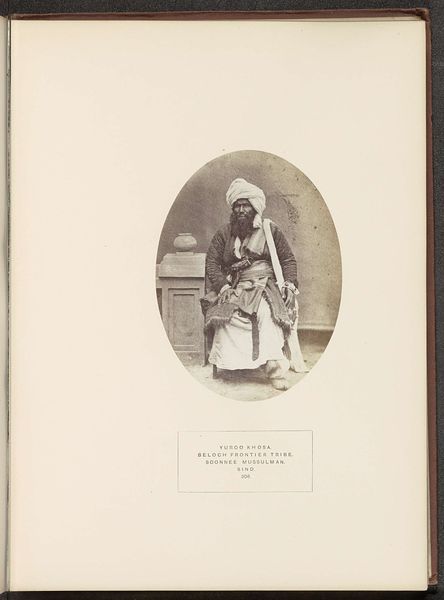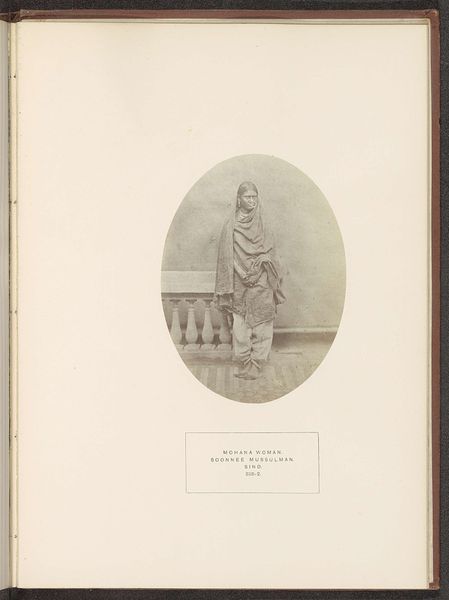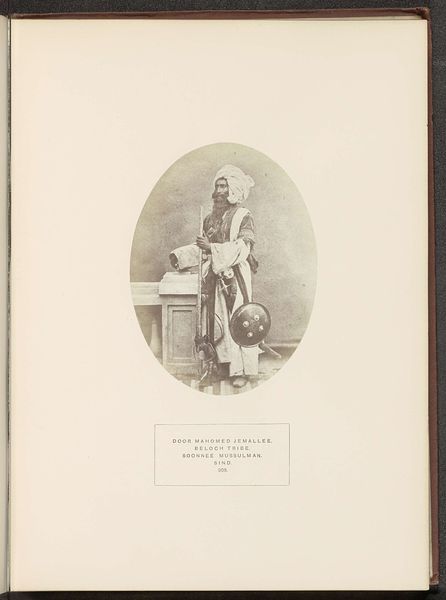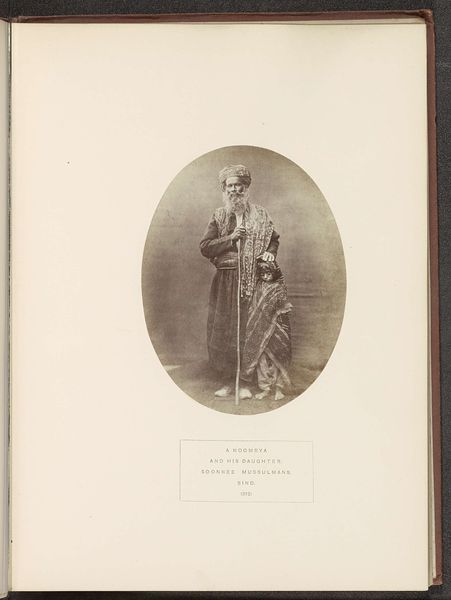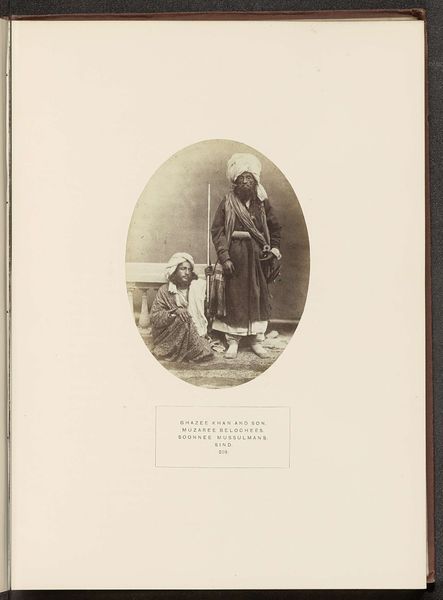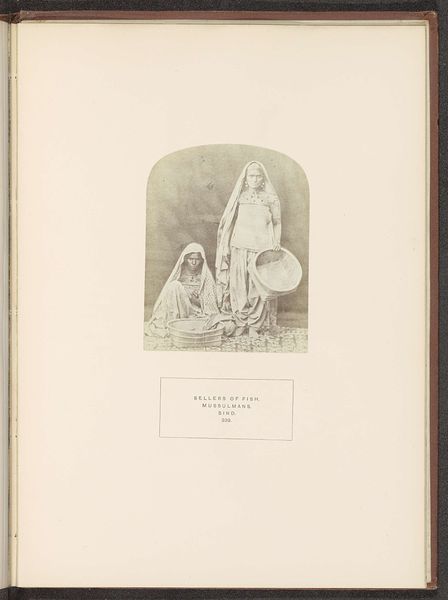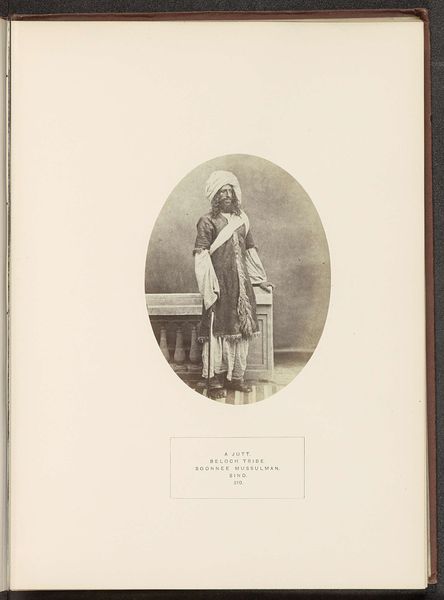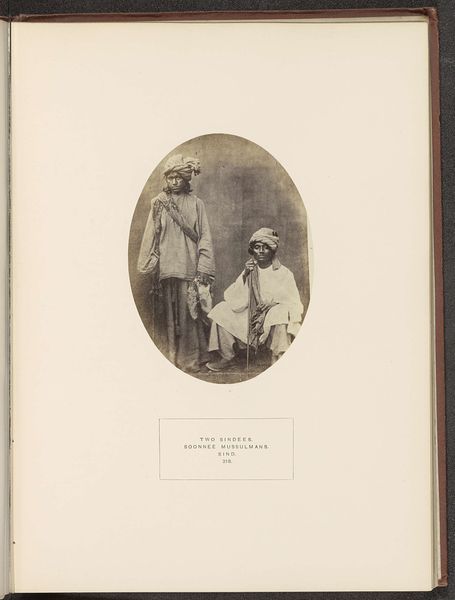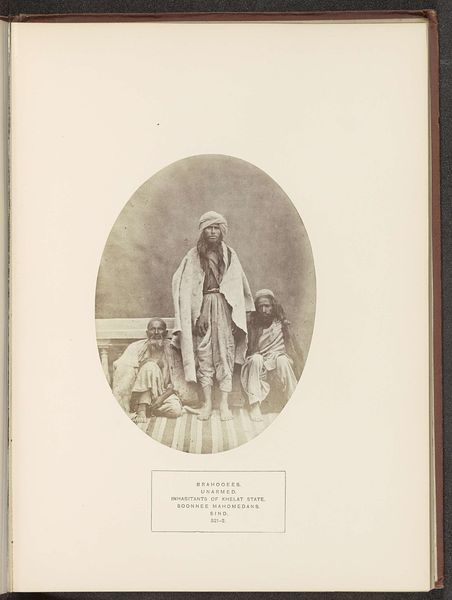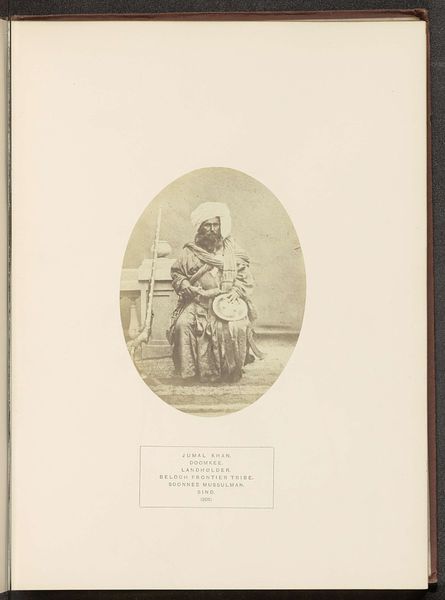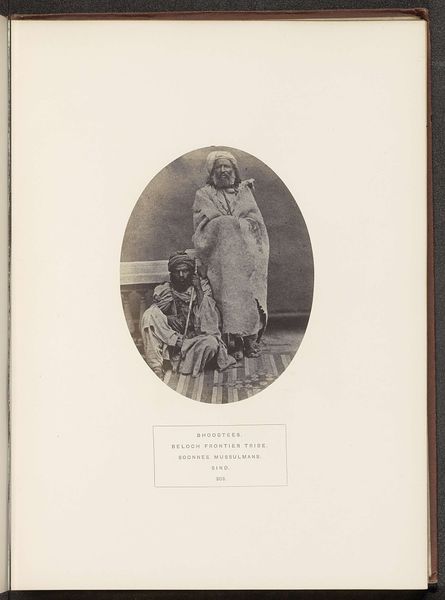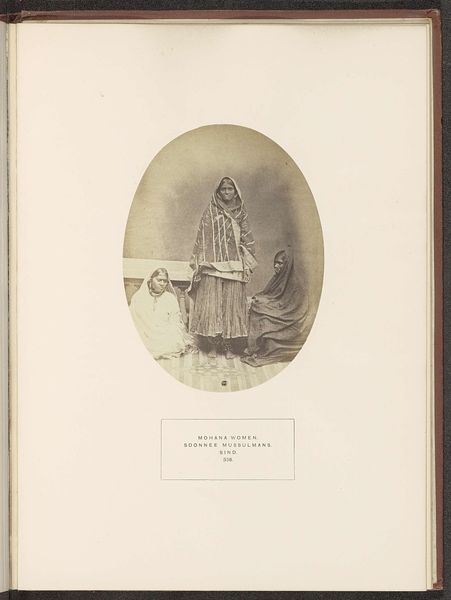
Portret van Gholam Ali Kan, een hoofd van de Jakhrani-stam, en een bediende before 1872
0:00
0:00
photography
#
portrait
#
photography
#
orientalism
Dimensions: height 146 mm, width 109 mm
Copyright: Rijks Museum: Open Domain
Curator: Looking at this photograph by Henry Charles Baskerville Tanner, taken sometime before 1872, one immediately notices the striking portrayal of Gholam Ali Kan, a chief of the Jakhrani tribe, accompanied by an attendant. It's an early example of photography as ethnographic record. Editor: My first thought? Power. A raw, unflinching sort of authority emanates from the figure of Gholam Ali Kan. There's a formality to the composition, almost staged, but his gaze pierces through. I feel a strange mix of respect and unease looking at this man staring back across time. Curator: The use of photography to document figures from colonized regions became popular in the 19th century, part of a larger project to collect and categorize the world and its people. How does Tanner’s piece differ, say, from purely scientific expeditions? Editor: The lighting, the texture… this goes beyond mere documentation. There's artistry here, a painterly quality to the sepia tones and the meticulous detailing of their clothing and weapons. You get a sense Tanner was aiming for more than a catalog entry—perhaps to capture a sense of dignity? The placement in the oval window enhances the solemn impact of a carefully composed portrait. Curator: Yes, but how much of this "dignity" is constructed, or imagined? Photography, particularly portraiture, can exoticize as easily as it humanizes. It seems pertinent to acknowledge photography’s frequent manipulation by Western perspectives to solidify the colonial dominance. Editor: It is difficult not to consider this shot, produced under colonial rule, from a position of power. Even so, isn’t it amazing that through all these sociocultural, or even manipulative lenses, there's still a man, with his rifle, beard and presence, holding his own? Curator: Perhaps the power isn’t the sitter’s so much as photography’s, to survive time and continue to invite new, crucial questioning. Editor: Precisely. Every time we encounter such portraits, it challenges our presumptions regarding that intersection of portrayal and impact of power, both old and new.
Comments
No comments
Be the first to comment and join the conversation on the ultimate creative platform.
